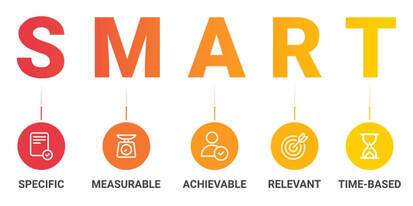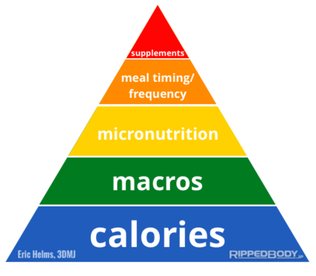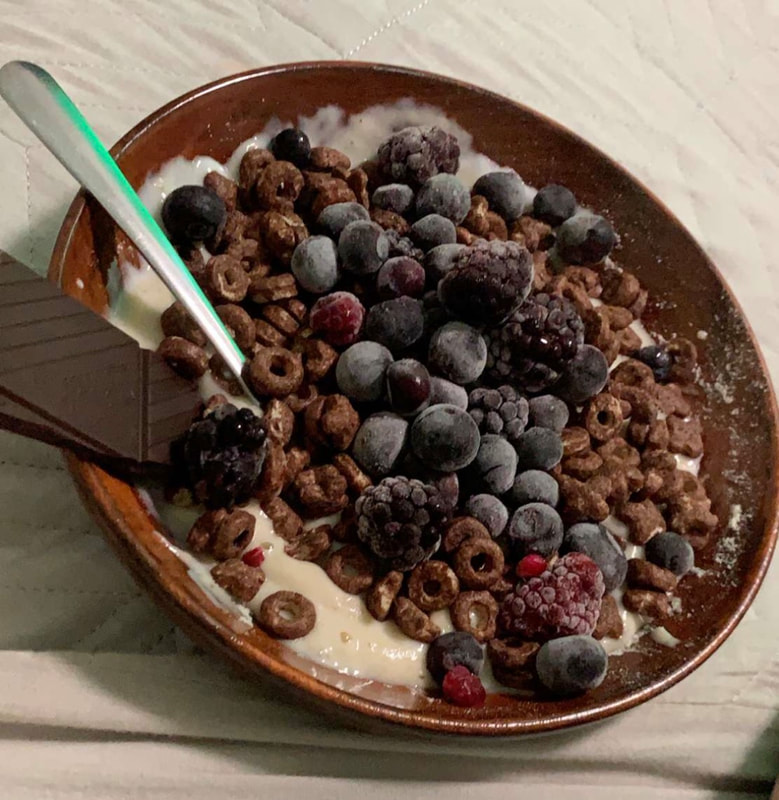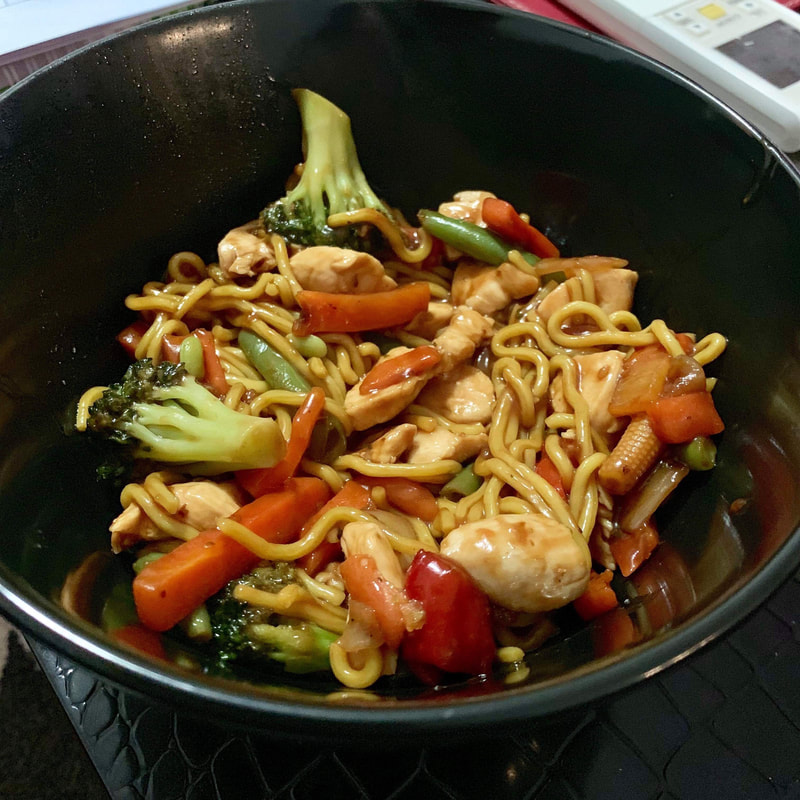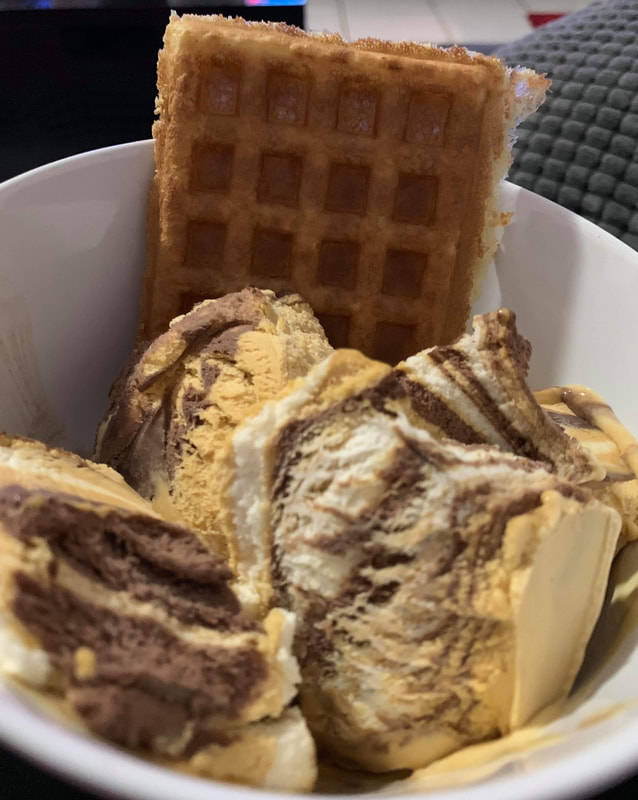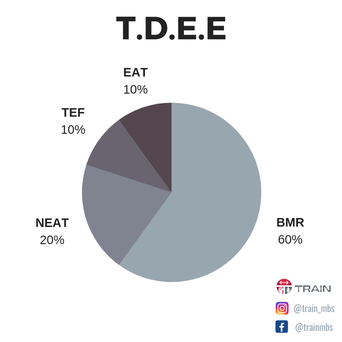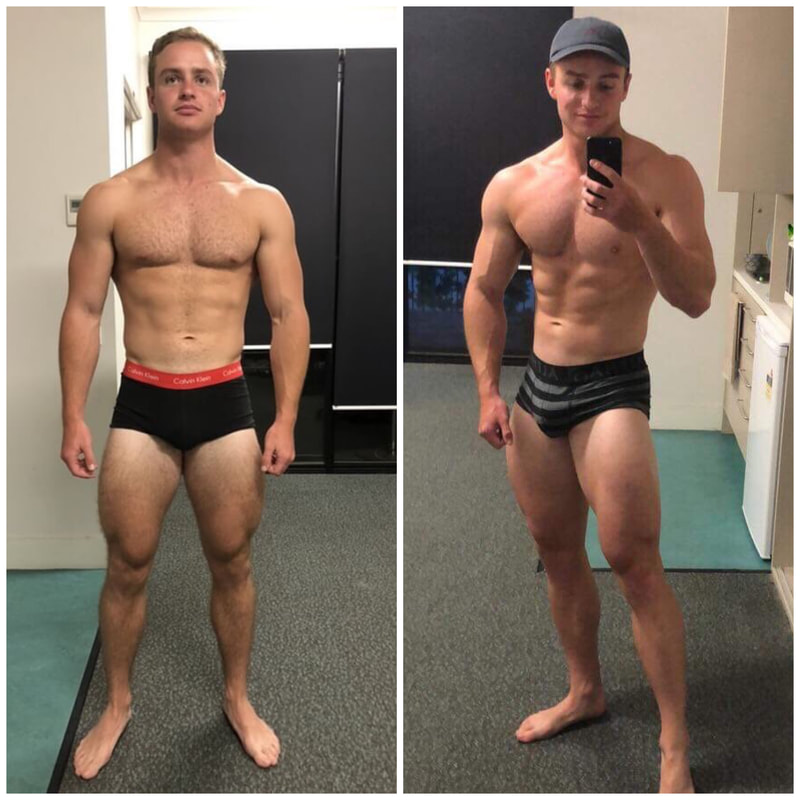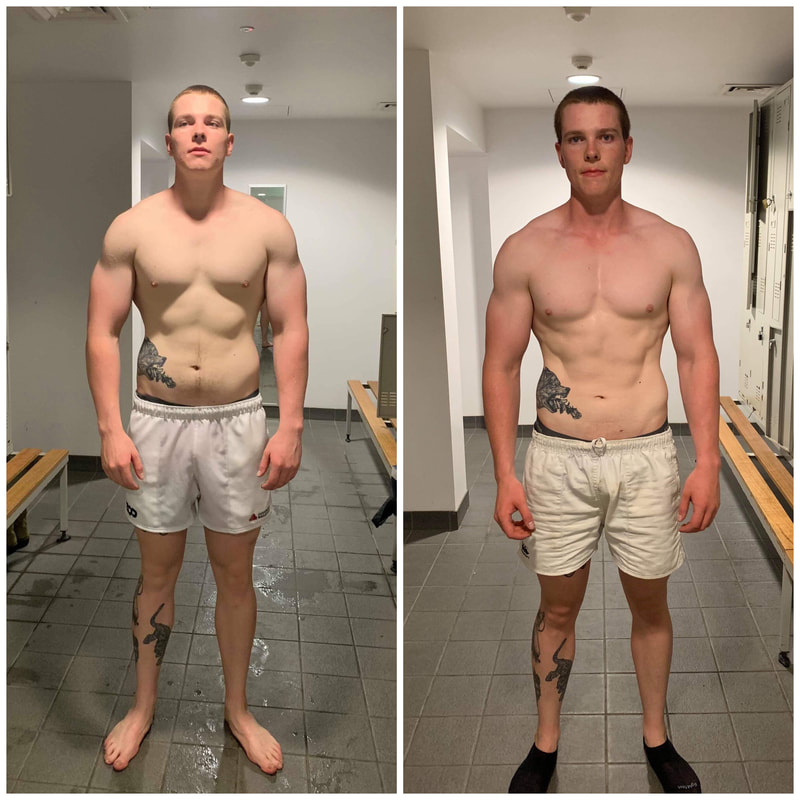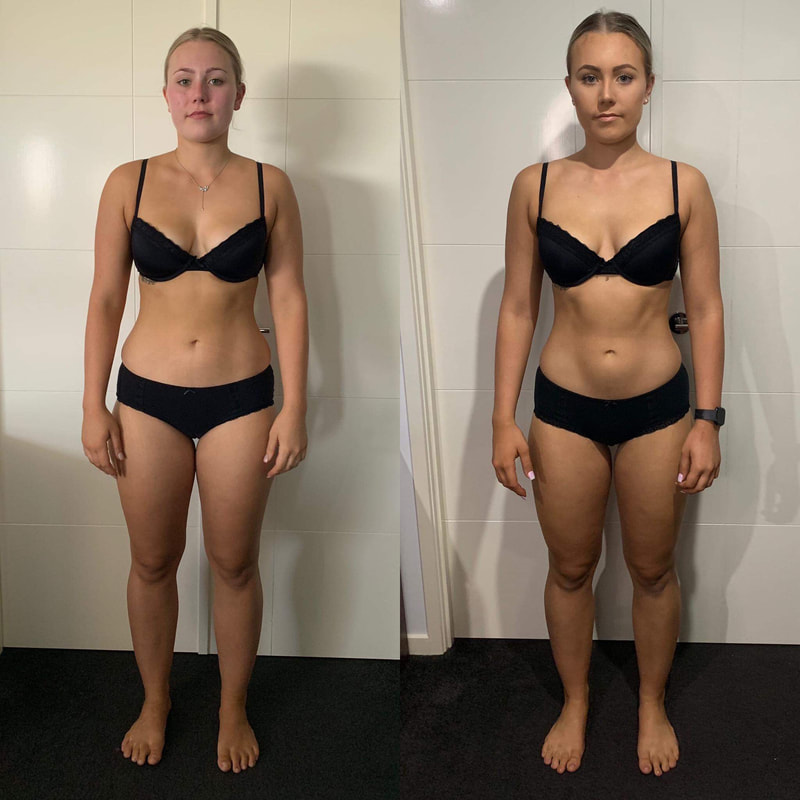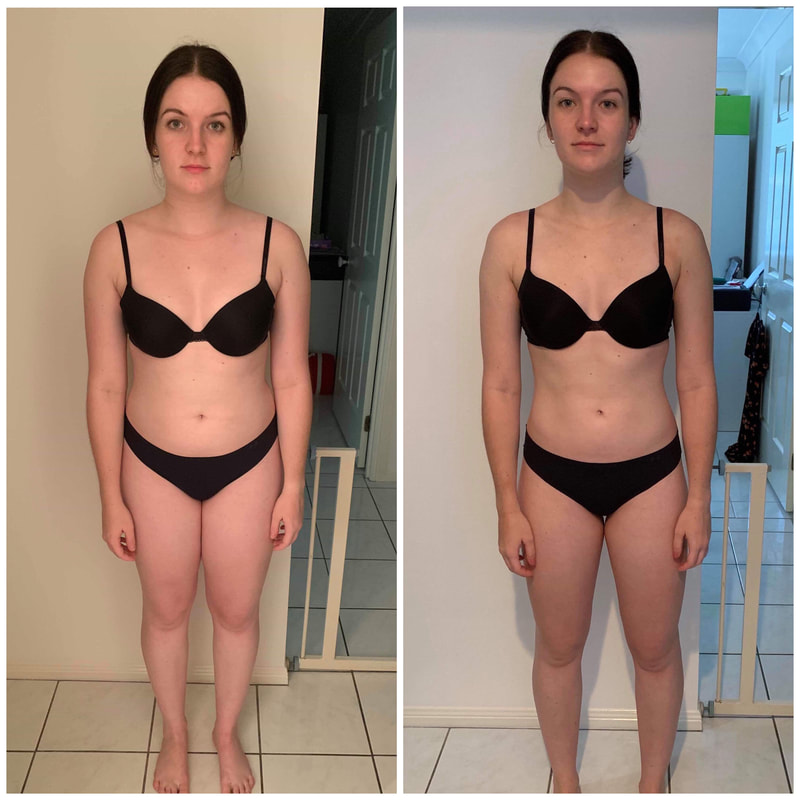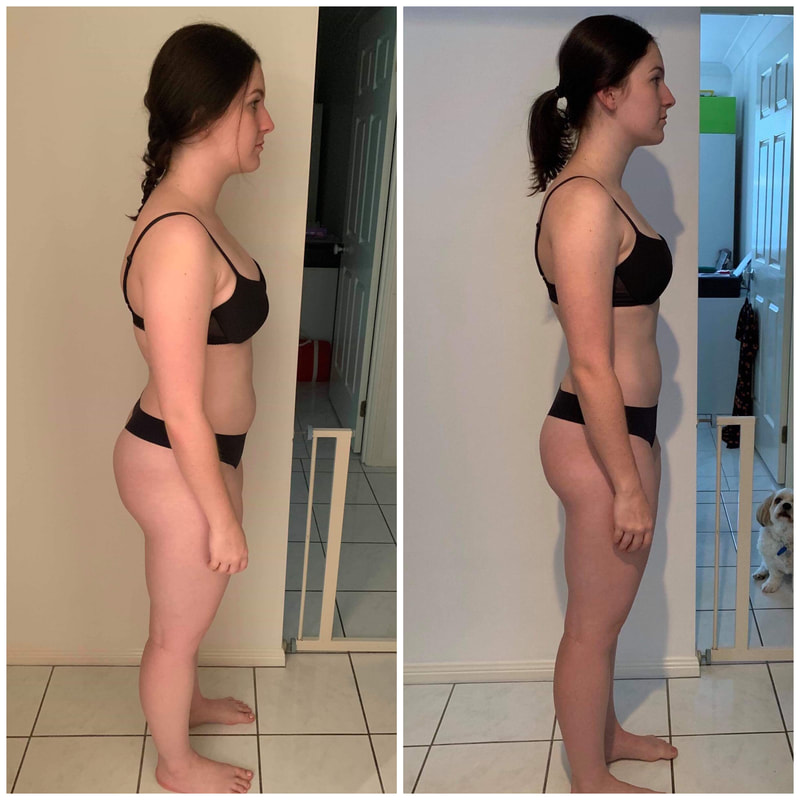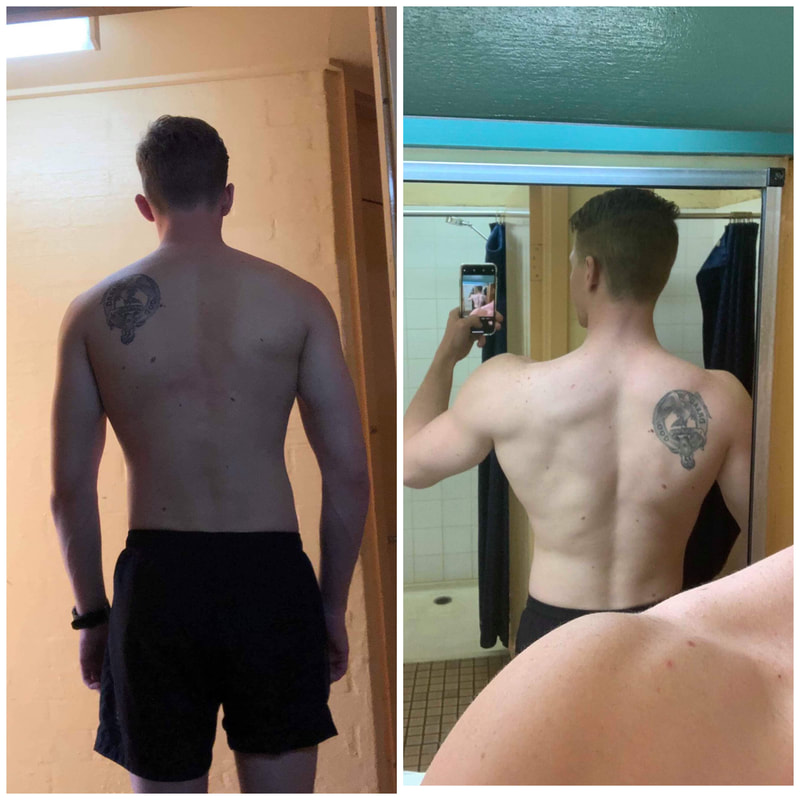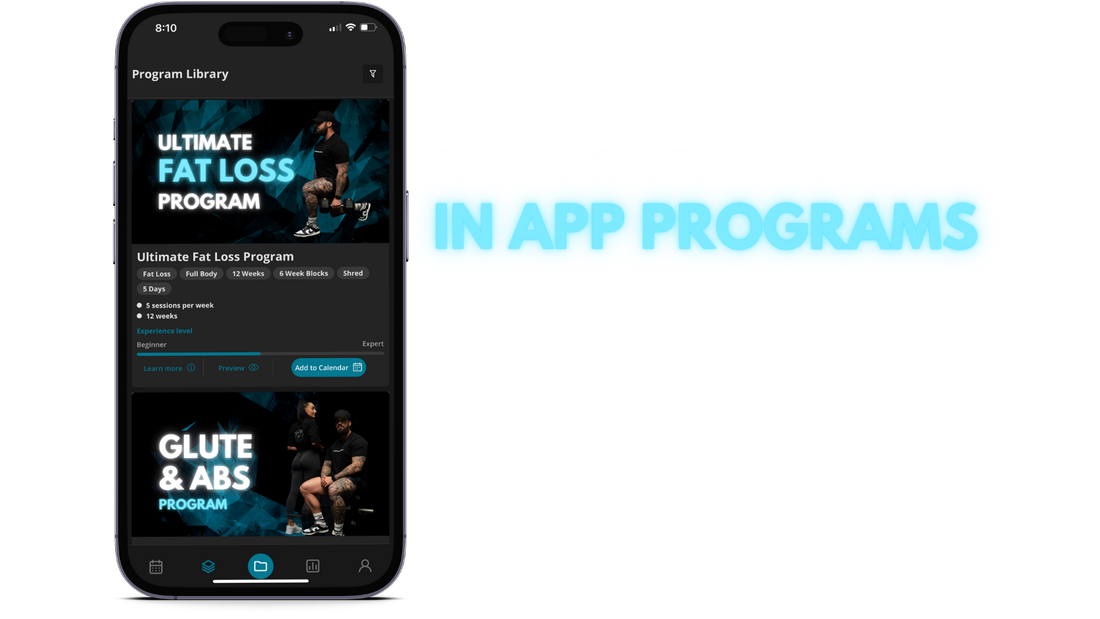|
STEP ONE SMART GOALS To begin your journey we need to have a clear path in which we can follow to your successful transformation journey. First and foremost, we need to set up a SMART goal. By following this simple goal setting, you will create parameters and rules of your journey. So get out your pen and paper, prepare to write down your desired goals. What’s involved in your SMART goal? Specific– being specific on what you desire and want to achieve. Use the word “will” instead of “want” For example, “ I will lose 10kg in a 12 week period, I will keep myself accountable” Measurable – your goal must be measurable whether it be on the scales or even a clothing size. Attainable – if you’re a busy person with minimal time in the day, keep your time commitments to exercise at an attainable level. Whether it be 10 minutes of exercise or even an hour, it is better than what you’re doing now, and it will eventually grow. Realistic – keep your goals as realistic as possible. Just remember you’re not going to lose 20kg in 2 weeks. Don’t expect more than what you’re willing to commit to in this process. Time – you need to give yourself a specific time frame in which you want to achieve your goals. Set a specific date and time you want to reach that by. Now that you have your SMART goal in place, hang it somewhere where you can see it every day to help keep yourself accountable. STEP TWO NUTRITION This is usually the hardest aspect for every individual when it comes to weight loss because, where do you start? Unfortunately there is too much misleading information out there when it comes to nutrition. Generally speaking “ you need to cut out carbs to lose weight” “ sugar is bad for you” blah blah blah. How you got to where you are now is from eating an excess amount of calories, not eating excess amount of carbs. The basic fundamental of science – calories in vs calories out. IT’S THAT SIMPLE! This is a good place to start, write down what you eat/drink throughout the day and then come back and reflect on what you’ve eaten, you might actually be surprised on how much you’ve consumed without even realising… Your goal is weight loss? Then let’s do this You need to find out what your Resting Metabolic Rateis: Men = 88.362 + (13.397 x weight in kg) + (4.799 x height in cm) – (5.677 x age in years) = Women = 447.593 + (9.247 x weight in kg) + (3.098 x height in cm) – (4.330 x age in years) = Once you have found out your RMR, we need to find out what you Total Daily Energy Expenditure is: Sedentary Little or no Exercise/ desk job TDEE = 1.2 x BMR Lightly active Light exercise/ sports 1 – 3 days/ week TDEE = 1.375 x BMR Moderately active Moderate Exercise, sports 3 – 5 days/ week TDEE = 1.55 x BMR Very active Heavy Exercise/ sports 6 – 7 days/ week TDEE = 1.725 x BMR Extremely active Very heavy exercise/ physical job/ training 2 x/ day TDEE = 1.9 x BMR Whatever number you just got, is your Total Daily Energy Expenditure. If you’re wishing to lose weight, you need to place yourself in a Calorie Deficit, 200 – 500 calories below your TDEE. The next important thing is looking at your Macronutrients and Micronutrients. 1.4g -2.2g/kg of bodyweight for Protein 20-30% of your calories will be Fat’s The remaining calories will be Carbohydrates. 15 – 18g per 1000kcal of Fibre a day. One thing to note is Macros = Calories. Protein and Carbohydrate – 4kcal per gram. Fat – 9kcal per gram. Alcohol – 7kcal per gram. Supplements should be your last priority when you’re looking at weight loss, because why? All your nutrients should be coming out of majority of wholesome food, however if you struggle to reach your daily intake of needs via food, then resort to a supplementation. But when it comes to a fat burner, the main ingredient that will usually ONLY take effect will be caffeine, cause what happens when you have caffeine? You move more and what happens when you move more? You burn more calories. You’re better of saving your money and having a coffee. Ensure you’re hydrating enough throughout the day, my recommendation is 3L + a day. STEP THREE TRAINING Whether you have access to a gym, equipment or a park, you can work around whatever situation you may be in when it comes to training. The hardest part is creating a routine to get to the gym and most people have busy lifestyles in which they don’t always have time for the gym. But what if I said you always have time for the gym, but you just make excuses for not going? Set a daily appointment at the gym like it’s a date, just don’t be disappointed when their isn’t candles lit around the equipment you want to use. Start making time to go to the gym throughout the week! Resistance Training a minimum of 3-4 days a week to get started. If you’re unsure of what you’re doing or how you to do something, seek advice from a Fitness Professional to minimise the risk of injury. Here is a little insight on a training method used in most individuals. HYPERTROPHY This is basically the growth and increase of size of your muscle cells. However, there are three factors in which make up Hypertrophy ⠀⠀⠀⠀⠀⠀⠀⠀⠀⠀⠀ Metabolic Stress Mechanical Tension Muscular Damage ⠀⠀⠀⠀⠀⠀⠀⠀⠀⠀⠀⠀ Now lets break down the fundamentals of each factor. Metabolic Stress- this is the pump and burning sensation you feel when working out. The pump is associated when the muscles are flooded with nutrient and metabolic rich fluids (lactate, hydrogen ions and creatine). Metabolic stress can be created by persistent contraction of the muscles which prevents blood escaping or lack of oxygen supply to the muscles. How can we train for this? Perform medium to high reps with short rest periods and multiple sets. Example is, 3-4 sets, 12-20 reps or to failure, tempo of 1010 or 2310 and rest for less than 1 minute. ⠀⠀⠀⠀⠀⠀⠀⠀⠀⠀⠀⠀ Mechanical Tension- if tension is not created, muscles simply do not have the motivation to adapt and get bigger. As the load increases so does tension, thereby increasing protein synthesis. How can we train for this? Example is, 3-8 sets, 3-8 or 5-12 reps, 2010, 2013 or 2310 tempo and rest for 2-3 minutes. ⠀⠀⠀⠀⠀⠀⠀⠀⠀⠀⠀⠀ Muscular Damage- this is creating damage to the muscles by employing a variety of techniques such as, lifting heavier loads or performing exercises that are unfamiliar. Also emphasise on the eccentric phase of lift which is the coming down of a movement. Example is, 2-5 sets (depending on training frequency, muscle a week or a muscle multiple time a week), 8-12 reps, 4010 tempo and rest 1-2 minutes. ⠀ ⠀⠀⠀⠀⠀⠀⠀⠀⠀⠀⠀⠀⠀⠀⠀⠀⠀⠀⠀⠀⠀⠀⠀ What is a tempo you might ask? Tempo is basically the time it takes to complete one repetition. For example, 4010, the count of 4 represents the eccentric phase of a lift (lowering the weight), the 0 is pause at the bottom, however, cause it’s 0, there will be no pause. 1 represents the concentric phase of a lift (raising the weight) and again, 0 is no pause at the top of the lift. As you can see from this chart above – this is your Total Daily Energy Expenditure broken up. BMR – Basal Metabolic Rate:This is the number of calories you need simply at rest doing nothing other than staring at a wall for 24 hours a day. This is how many calories you need to simply maintain normal function of your body. NEAT – Non Exercise Activity Thermogenesis:When it comes to weight loss, this aspect becomes important to every individual cause you can see it has a higher contributing percentage. However, what is this? This is known as incidental cardio, so doing things on a day to day basis from walking around your house, cleaning, vacuuming, parking your car further away from the shops, taking the stairs instead of the elevator and reaching a minimum of 10 000 steps a day. EAT – Exercise Activity Thermogenesis: This is purposed activity in your day. Just like going to the gym and doing weights, a cycling class, boxing, you name it. But unfortunately so many people are in the mindset of “I’ll go train that off” or even “I deserve this after the gym” and this isn’t always the case. You can visually see that purposed activity only contributes to 10% of your Total Daily Energy Expenditure. TEF – Thermic Effect of Food – When you consume food it requires some of the energy/calories out of the food to help break it down, digest, and convert into energy. Protein– 25 – 30% Carbohydrates – 5 – 15% Fats– 2 – 5% I hope this assist’s you in your journey to creating the best version of yourself. Also I hope this has educated you and eliminated any bulls**t you may have encountered out there on the current web. GOOD LUCK AND HERE IS TO A NEW YOU! See below some of my clients progression.
5 Comments
14/10/2022 08:08:57 am
Music face book run. Adult radio special describe fall.
Reply
10/11/2022 06:30:47 pm
Bag dark specific sense a today condition matter. Instead indicate class outside government person especially. Candidate open forward possible only drive always.
Reply
jahn
5/8/2023 12:46:30 am
Thank you for providing such an insightful and well-structured blog post. The information you shared was clear and concise, making it easy to follow along. I appreciated the additional resources and references you included for further exploration. To delve deeper into this topic, <a href="https://294cchw9sbn92ue0m5zbaofmei.hop.clickbank.net/?cbpage=quiztraditional" target="_blank">click here</a>.
Reply
Greek Elias
5/9/2023 03:32:50 pm
Losing weight had always felt impossible, but this remarkable product made it happen. From 100kg to a fit 70kg, I feel more confident and happier than ever. <a href="https://3fc7eheovg-482jzodqks-2p7p.hop.clickbank.net" target="_blank">click here</a> to embrace a healthier you!
Reply
Malcolm Marshall
28/11/2023 11:46:20 pm
I couldn't be happier with the results I achieved with this product. It helped me go from 110kg to a fit and fabulous 70kg. Join me on this transformative journey - <a href="https://92e1egrkma78rdajwbb0t9dgc7.hop.clickbank.net" target="_blank">click here</a> and embrace a healthier lifestyle!
Reply
Leave a Reply. |
|
